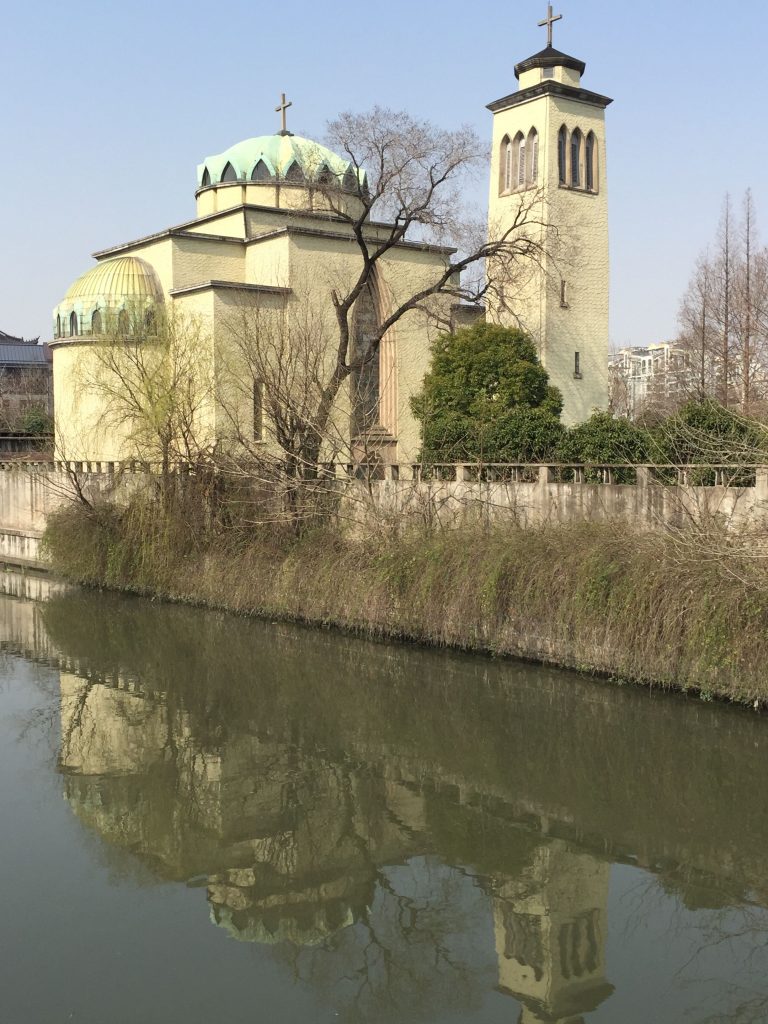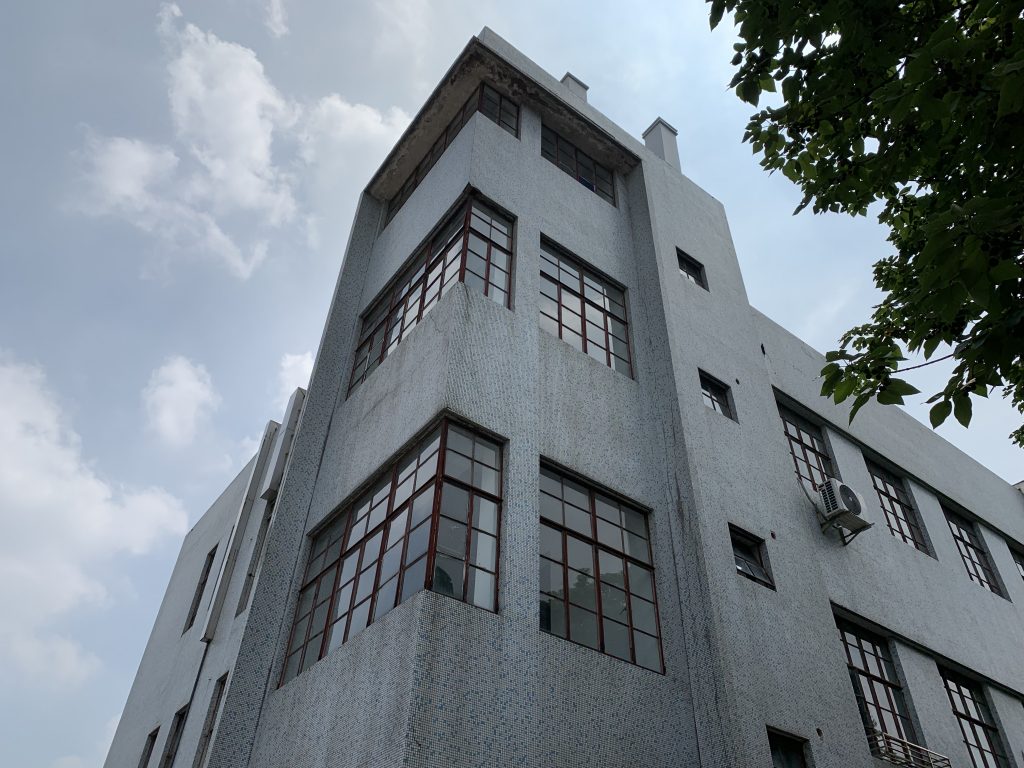On the way to visit Qibao Old town, in Minhang district, I was not expecting to see any Art Deco architecture. This part of Shanghai used to be a separate village in the countryside, reachable by boat, crossing the swamps over the small rivers that were surrounding Shanghai then. The trip would have been shorter, but similar to the one to Sheshan (see post Climbing Zo Se for more details).

Although Old Shanghai was one of the largest cities in the World in the 30’s with more than 3 million inhabitants, its footprint was much smaller than today’s Shanghai. If early 20’s century architecture, in particular Art Deco, can be found in the center of Shanghai, it is unheard of outside of today’s first ring road. The only exception being Hudec Laszlo’s Catholic Country Church, built then in the countryside, now located in the residential area of Hong Qiao (picture above) in Changning district.
I was then really surprised to discover this Art Deco building close to Qibao Temple. It was hidden between a large advertising poster and seems to be soon to be demolished, but the style was impossible to miss. How could an Art Deco building end up here?

The mystery did not last for long, as although the style was very much modernist / Art Deco, the cover of small tiles is typical of the 1980’s architectural style in China. This building is the former Minhang phone exchange. This kind of building seems to have crossed through time more or less unchanged, just like the ones in the former French Concession or the Former International Settlement. It was probably the first modern building in the area, and like in other cases, architects in the 80’s reused techniques and styles from the late 30’s or 40’s. Architecture did not change much in the meantime in China, so the modern ideas of Old Shanghai were still modern 40 years later. As new technology allowed larger buildings, this lead to Frankenstein Art Deco (see post Frankenstein Art Deco for more details).
Even if it was out of fashion for more than 40 years went it was built, it must have been the top of modernity in this rural surroundings… and somehow it still is very modern. Too bad it will soon go down.